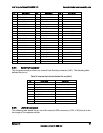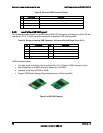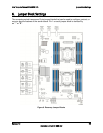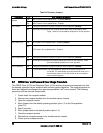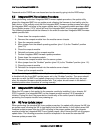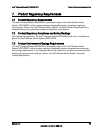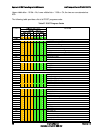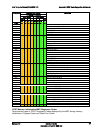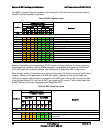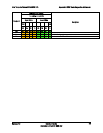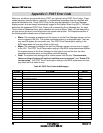
Appendix A: Integration and Usage Tips Intel®
Compute Module MFS2600KI TPS
Revision 1.0
Intel order number: G51989-002
44
Appendix A: Integration and Usage Tips
When two processors are installed, both must be of identical revision, core voltage, and
bus/core speed. Mixed processor steppings are supported as long as they are listed in
the processor specification updates published by Intel Corporation. However, the
stepping of one processor cannot be greater than one stepping back of the other.
This server board supports The Intel
®
Xeon
®
Processor E5-2600 product family with a
Thermal Design Power (TDP) of up to and including 95 Watts. Previous generations of
the Intel
®
Xeon
®
processors are not supported.
Processors must be installed in order. CPU 1 must be populated for the Compute
Module to operate.
On the front edge of the Compute Module are eight diagnostic LEDs that display a
sequence of amber POST codes during the boot process. If the server board hangs
during POST, the LEDs display the last POST event run before the hang.
This server board only supports registered DDR3 DIMMs (RDIMMs) and unbuffered
DDR3 DIMMs (UDIMMs). Mixing of RDIMMs and UDIMMs is not supported.
For the best performance, the number of DDR3 DIMMs installed should be balanced
across both processor sockets and memory channels. For example, a two-DIMM
configuration performs better than a one-DIMM configuration. In a two-DIMM
configuration, DIMMs should be installed in DIMM sockets A1 and E1. An eight-DIMM
configuration (DIMM sockets A1, B1, C1, D1, E1, F1, G1, and H1) performs better than a
four-DIMM configuration (DIMM sockets A1, B1, C1, and D1).
Normal Integrated BMC functionality (for example, KVM, monitoring, and remote media)
is disabled with the BMC Force Update jumper set to the “enabled” position (pins 2-3).
The Compute Module should never be run with the BMC Force Update jumper set in this
position and should only be used when the standard firmware update process fails. This
jumper should remain in the default (disabled) position (pins 1-2) when the server is
running normally.
When performing a normal BIOS update procedure, the BIOS recovery jumper must be
set to its default position (pins 1-2).




